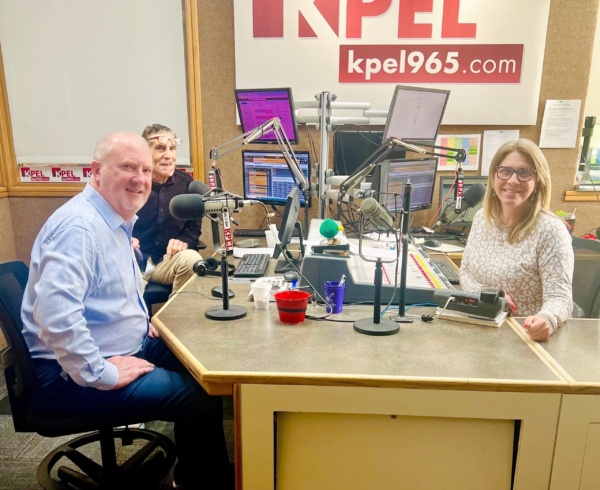Technology Can Edge You Closer to Closing.
Real estate is a people-centric business. Building relationships with and being available to clients are essentials to success in the industry. An indispensable element of that relationship is spending quality time face-to-face with clients to get to know and understand their needs and expectations. A sale begins and ends with a face-to-face meeting, and Realtors should not overlook the importance of maintaining that aspect of the relationship with their clients.
However, there are many other facets to successfully nurturing a client relationship that should be considered when building a business in real estate. A key tool is the rapidly advancing technologies that can be used within the industry. Using technology to enhance the client experience should be an integral part of a Realtor’s business development plans. New technologies abound for agents, and should be embraced as a way to maximize their time and expand their business.
Mobile Apps
Mobile is the now, and the future. Mobile usage has surpassed desktop usage, and now accounts for half of all U.S. digital media consumption. Smartphones and tablets have become the primary access point for the Internet in the U.S., as consumers want to gather the information they need quickly and easily.
Mobile application development is an opportunity for agents and companies to reach consumers where they spend most of their digital time. Realtors need to consider what needs their clients have and how to best meet them. What kind of experience can be created that will impress a client? What information can be obtained from the agent that may be difficult to obtain anywhere else? How can the agent enhance the buying or selling experience?
There are plenty of apps available that meet a need in the industry, but there are opportunities to develop more, especially at a local level. To develop an app is to literally put a business at the fingertips of its audience.


Geofencing
Geofencing is a location-based feature in a software program that uses GPS or RFID (such as Wi-Fi and Bluetooth) to define virtual geographical boundaries. Marketers can use those boundaries as a tool to entice potential clients as they move through the geofence area. For example, retailers can offer coupons to anyone who has downloaded their app and then crossed over into their geofence location.
For Realtors, one might set up a mobile app that alerts users of available real estate in a pre-defined geographical area when that person crosses the boundaries set by the geofence. It’s a tool for lead generation that users have opted-in to using, and a great way to engage clients with information that they want to receive.
3-D and virtual reality home tours
Home tours are getting more interactive. There are online tools available for Realtors to render 3-D floor plans to create a virtual staging of a home. Some of the programs also allow buyers to virtually stage the home with furnishings and designs of their choice. It allows them to create the space as they are visualizing it to see if it will work for them.
Realtors can take 3-D one step further by adding virtual reality to the mix, creating a completely immersive experience into the home. Users will feel as if they are actually walking through the home. Some developers are working on features that will allow users to project holograms of furnishings into the space.
It would be an investment, but think of the benefit to the buyer if they can “walk” through a property and customize it based on their visualization of the space. The questions, “Will this fit in the space?” and “How will we decorate it?” will be answered before they purchase the property. A virtual reality tour can help solidify a sale by putting a buyer at ease with the property.


Drones
Aerial photography and videography was once a “pie-in-the-sky” idea for most Realtors as the cost and logistics were out of reach. However, with the proliferation of drones, it has become more accessible and more affordable for most agents to get aerial photographs and videos of their listings. While not every listing needs them, the photos are especially helpful when agents want to feature large and luxury properties. Commercial property listings especially benefit, as the photos can present an overall view of the space, which may be difficult to visualize from the ground.
Legally, drones cannot be used by just anyone. There are regulations that restrict use and require registration. However, the National Association of Realtors is working with the Federal Aviation Association to streamline the process and make drones more readily available for commercial, for-profit use.
If the day comes when a Realtor operate a drone camera, just think of the possibilities for showing off listings, especially to buyers who may not be local to the listing.
Artificial Intelligence
Want to increase lead conversions and closings? Artificial Intelligence (AI) is here to help. There are AI programs out there that will do the work of humans, such as qualifying leads and serving as a customer service representative. Specifically for real estate, AI programs that qualify leads can relieve the workload from agents. Once qualified, leads are passed along to agents to follow up and close. This frees up agent’s time to handle other business, such as closing deals and showing homes. Less time is spent chasing unqualified leads, and more time is spent nurturing quality leads.

The List Goes On. And On.
This is just the tip of the iceberg. There are countless technologies shaping and redefining not just the real estate industry, but all industries. The ones we have highlighted are currently available and top of mind for progressive real estate agents. They can be adapted to suit any size business, and we expect them to become the norm rather than the exception.
These tools are not designed to replace the personal aspect of the relationship that agents work so hard to build with their clients. They are meant to help facilitate the progression from inquiry to closing in a way that meets the needs of both the Realtor and the client.







